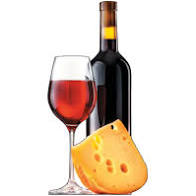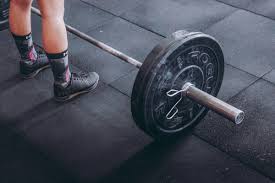|
Hi everyone, welcome back! We're looking at powerful PAIRINGS in wellness this week The word of the day is COMPOUND! This powerful word connotes an appealing concept of creating something BIGGER than the sum of it's parts. It is why we combine spices, pair the right wine with cheese, or put money into long term investments. We like to pair things together to give us a return on investment! Weight training demonstrates this concept beautifully. Strategic, and progressive OVERLOAD is the key component in producing strength and increased muscle mass. These gains, in turn, boost metabolism, making it easier to burn calories and manage weight down the road, while the increased strength further allows more and more gains, and this positive feedback loop continues. This is the DEFINITION of compounding! Problem is, many don't design their resistance training properly enough to maximize the time spent during a training session. ORDER and TYPE of exercises MATTERS if you want to maximize the compounding effect of strength training. I'm going to discuss one aspect of this concept, since there are too many to cover in one post! X-factor in compounding gains: NEURAL PATHWAYSI don't want to go into the physiology too deeply, so I'll just give a quick explanation of what neural pathways are in regards to strengthening. Essentially, when we lift weights, there are two ways we get stronger:
Analogy Time!Think of NEURAL PATHWAYS like the interstate, and each vehicle as one nerve impulse. The more lanes you build, the more volume of traffic (nerve impulses) can get through, and in less time! Strength training opens up neural pathways, like adding lanes on the interstate, allowing more traffic (nerve conduction) to each muscle group. Crude analogy, but it gets the point across! Multi-joint lifts = where the gains are!Structuring a workout to maximize this opening of neural pathways is done using a specific order of exercises. I am of the belief that EVERYONE of any age and walk of life should be able to perform the big lifts (deadlift, squat, press, pull) properly, and with confidence. It is the first thing I work on with the vast majority of my clients. The list of all the reasons is too long to get into now, so I will just hit on their relationship to the central nervous system When you want to lift something, the brain has to coordinate a complex message to the muscles, via the spinal cord, and specific nerve root to the proper muscles. If the message is to lift a pencil, there are fewer signals required, and fewer motor units (muscle group + nerve) are recruited to complete the task. If it is to lift a bag of dog food, additional motor unit recruitment are required to complete that task. Have you ever tried to lift something that turned out to be a LOT heavier than you were expecting, forcing you to reset, brace, and try again? Unless overridden with focus and preparation, the brain will try to accomplish any perceived task with the FEWEST amount of resources possible. Getting to the Point! Thus, when a heavy lift is required, say on a deadlift or squat (again, I'm using the term heavy in relation to an individual's relative strength) we are forcing the brain to recruit more than the minimum resources throughout the lift. This enhanced neural pathway incurred by these heavier dynamic lifts remain open temporarily to ALL muscular functions along that same nerve root, both acutely (short term, within the same workout), and chronically (over time)! And THUS, heavy lifts done earlier in the workout will increase effectiveness and nerve conduction to ALL muscles innervated by the same nerve root. The deadlifts and squats done earlier in the session, will enhance recruitment of all lower body muscles during the smaller isolated lifts (leg curls/extensions, lunges, calf raises, etc) BEYOND what they would otherwise! Increased recruitment = more muscle cells forced to get stronger and bigger = more gains with less effort! Favorable ROI indeed! Best pairings for enhanced neural pathways
Summary of pairings
If you would like help in designing your workout, please reach out for guidance! I would be happy to help
Until next time!
0 Comments
Leave a Reply. |
Broad Scope Narrow Focus BlogWelcome to the Broad Scope Narrow Focus Blog! I hope you find a lot of useful and applicable information as we explore the broad world of Wellness together. Check in often, as there will be new posts weekly! Enjoy Archives
September 2021
Categories |
Services |
Hours & Contact InformationHours of Operation: The Facility is staffed Tuesday - Thursday 7a-5p
*Facility is accessible 24 hrs / 7 days a week e . [email protected] p . (616) 787 - 7710 |








 RSS Feed
RSS Feed